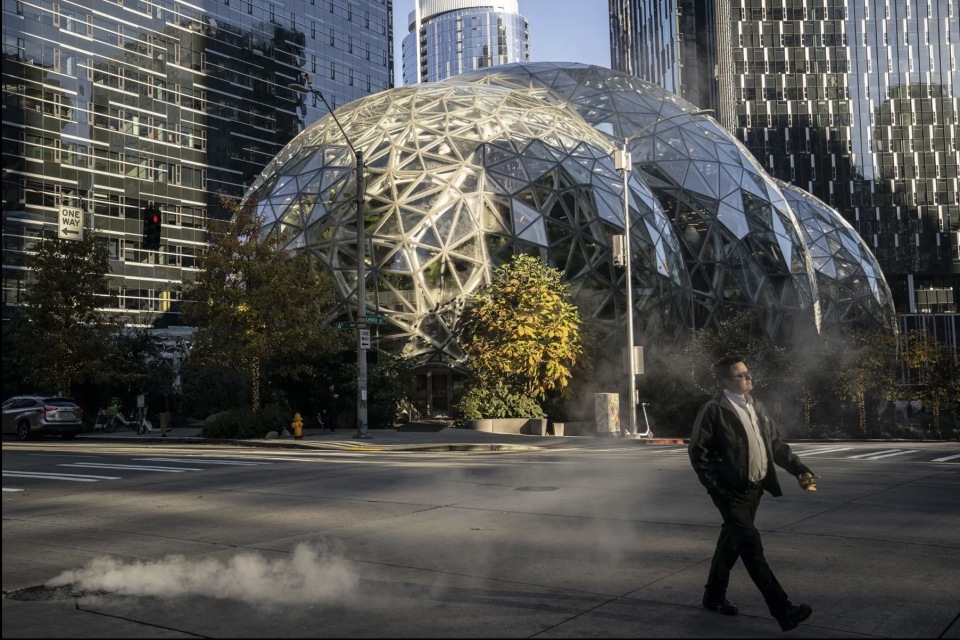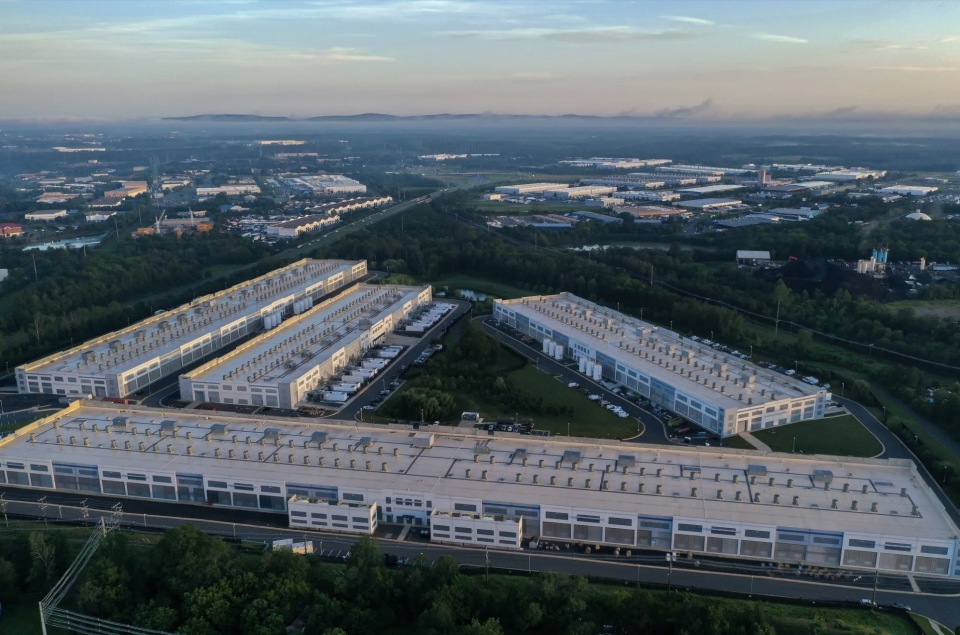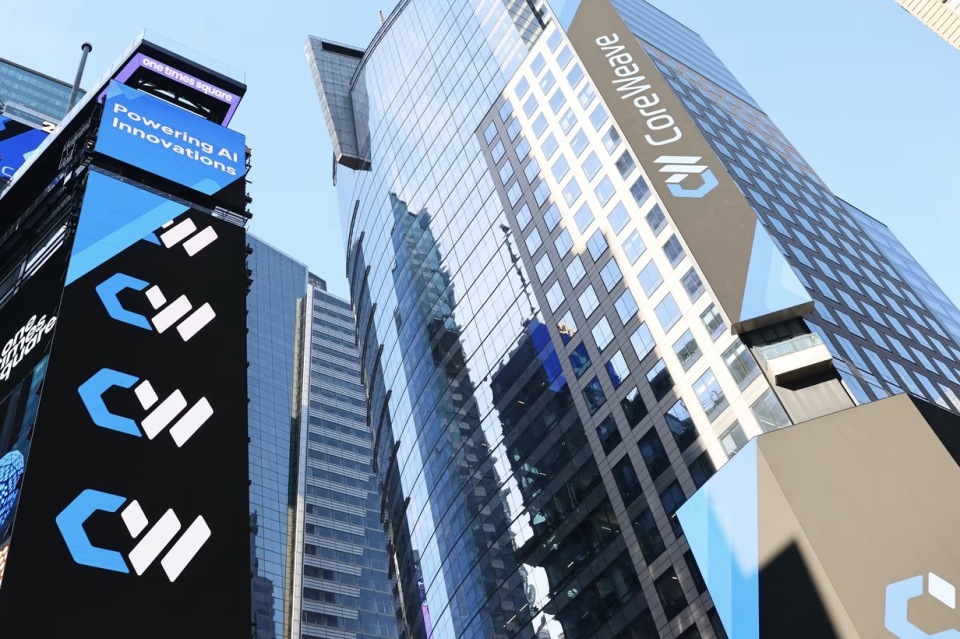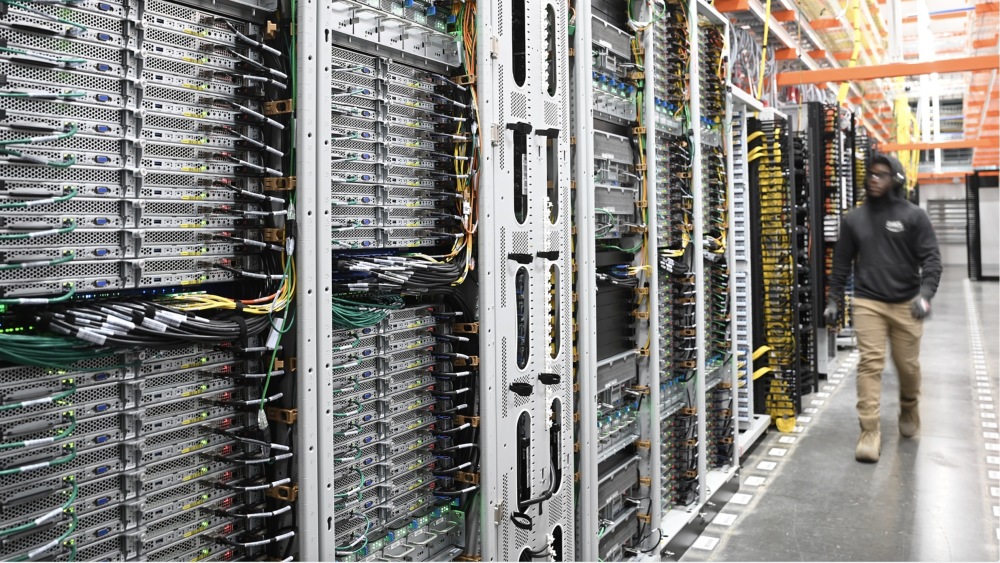
As reported on October 25th, there was a time when Amazon Web Services (AWS) was the undisputed synonym for “cloud computing.” AWS not only pioneered the business model of cloud computing but also, with its revolutionary “pay-as-you-go, unlimited scalability” services, migrated enterprise IT infrastructure from cumbersome on-premises data centers to the flexible and scalable cloud. Its success not only made it Amazon’s “profit engine” but also granted it unparalleled pricing power and voice in the entire tech industry.
However, as tides rise and fall, the new wave of Generative AI is impacting AWS’s traditional territory at an unprecedented speed and intensity, exposing cracks deep within this massive empire. Multiple internal documents marked “Amazon Confidential” and external market data together reveal that AWS is facing a “fundamental shift”: its long-reliant startup ecosystem and early-stage budget dominance are being gradually eroded by a new AI-centric technology stack.
As the inventor of cloud computing, AWS suddenly finds itself in the position of a “follower.” Competitors that it once surpassed “in the blink of an eye” are now accelerating ahead in AI computing power, model partnerships, and market reputation, dimming AWS’s luster day by day.
I. Disrupted Budgets: The “Fundamental Shift” in Startups’ Spending Patterns

AWS’s rise was rooted in its absolute control over startups’ early IT budgets. In startups’ budget planning, AWS was once the default first choice—it allowed entrepreneurs to launch businesses quickly without investing huge capital in hardware purchases. This promise of “making entrepreneurship easier” brought AWS a steady stream of customers and strong ecosystem stickiness.
1. Warnings from Internal Documents and Dramatic Shifts in Budget Flow
Nevertheless, internal AWS documents obtained by foreign media clearly show that this golden rule is being broken. “Amazon Confidential” reports written in March and July 2024 directly point out that startups’ spending patterns have undergone a “fundamental shift.”
In the traditional capital investment model, startups would prioritize allocating funds to AWS’s traditional cloud services, such as EC2 compute instances, S3 storage, relational databases, and other Infrastructure-as-a-Service (IaaS) offerings. The new AI-focused investment model is completely different: startups’ “First Dollar” no longer flows to traditional services but instead to AI models, inference infrastructure, and AI developer tools.
A warning in the documents rings out sharply: “Founders tell us they want to wait until their companies are more mature before choosing AWS.” This statement hits the core—AWS is losing the “first deal” with founders, and with it, the crucial opportunity to build stickiness at the starting point of the customer lifecycle.
2. The Temptation of “Cloud 2.0”: Shifts in Computing Core and Early Adoption
The AI wave has spawned a brand-new technology stack known as “Cloud 2.0.” In the AI era, the core of computing power has shifted from traditional Central Processing Units (CPUs) to Graphics Processing Units (GPUs) and other accelerated chips dedicated to AI training and inference; the focus of spending has also moved from server rental to model calling, inference optimization, and AI-as-a-Service (AIaaS).
As a result, in the early stages of their establishment, startups often first purchase leading AI model services from providers like OpenAI and Anthropic, or use new developer platforms such as Vercel. They delay purchasing AWS services until their businesses reach a stage where they require advanced security compliance, complex global deployment, or large-scale traditional infrastructure—only then do they bring AWS back into consideration.
Internal data quantifies this “delayed adoption” trend. Amazon’s internal documents show that among the Spring 2024 batch of Y Combinator startups, only 59% used more than three AWS services, a drop of over 4 percentage points compared to 2022. During the same period, 88% of startups used OpenAI models, 72% used Anthropic models, while the proportion of those using AWS’s own AI developer tool, Bedrock, was a mere 4.3%. These figures clearly indicate that startups’ early-stage technical focus and capital allocation have rapidly shifted toward AI model providers.
3. The Embarrassment of Customers Being “Surface-Loyal but Distant at Heart”
What is even more embarrassing for AWS is that even startups that “fully rely on AWS” on the surface are shifting their spending focus. The documents cite the example of Cursor, an AI coding startup: although it is regarded as a typical “heavy AWS user,” its spending on traditional cloud infrastructure accounts for less than 10% of its total AI-related expenditure. Most of the company’s costs flow to external model API calls and “neocloud” providers specializing in GPU resource rental, such as CoreWeave, Lambda Labs, and Crusoe.
This means that while customers are “loyal” to AWS in form, their core, high-growth, and high-stickiness AI budgets are largely flowing to competitors or new types of service providers. More critically, the stickiness of new AI spending categories is far lower than that of traditional services—customers can quickly switch between multiple providers, leaving AWS’s ecosystem moat facing unprecedented erosion. Amazon’s documents explicitly warn that new AI spending categories “may account for the majority of startups’ cloud consumption.”
II. Falling Behind: Rhythms Disrupted by the AI Wave and Organizational Inertia

The core reason for AWS’s passivity lies in the fact that its response speed and strategic focus in the AI wave have been far outpaced by competitors such as Microsoft and Google.
1. Loss of Focus at a Critical Moment: A Stark Contrast at re:Invent 2022
AWS’s lag in the field of artificial intelligence is no accident; it was outdistanced by competitors at a crucial historical juncture. This “loss of focus” occurred in late 2022, and its impact still reverberates in the industry today. On November 30, 2022, AWS CEO Adam Selipsky delivered a two-hour keynote speech at the re:Invent conference in Las Vegas. The core content of the speech was both traditional and conservative, focusing primarily on promoting traditional cloud services such as infrastructure, databases, and storage, while continuing to encourage customers to migrate workloads to the cloud. He emphasized AWS’s classic promise: “With AWS, you don’t have to worry about having too much or too little capacity.”
In Selipsky’s two-hour keynote, the disruptive concept of “Generative AI” was almost absent. The occasional mentions of AI only centered on AWS’s existing machine learning services, lacking narratives about large models or revolutionary intelligence. This leader of the cloud computing industry clearly failed to see the impending tsunami, still immersed in the glorious narrative of “cloud infrastructure” success.
On the same afternoon that Selipsky concluded his speech, OpenAI CEO Sam Altman announced the official public launch of ChatGPT. At that moment, the industry landscape was upended instantly. With its astonishing interactive capabilities, ChatGPT quickly pushed “Generative AI” into the mainstream, not only proving the commercial viability of AI but also revealing a harsh truth: the core value of cloud computing is shifting from Infrastructure-as-a-Service (IaaS) to AI-as-a-Service.
The Heavy Cost of AWS’s “Loss of Focus”
When the entire industry turned its attention to GPU computing power, model training, and AI application development, AWS’s internal resources remained primarily focused on traditional cloud services. This caused it to fall behind competitors in launching AI-native tools—it was not until 2023 that it rolled out the Bedrock platform, by which time OpenAI and Microsoft had already locked in a large number of high-value customers through early partnerships. It was not until the November 2023 re:Invent conference that AWS was forced to elevate AI to the core of its agenda, mentioning AI nearly 100 times in two hours and urgently launching services such as Amazon Q. However, this sudden and frequent mention of AI felt more like a remedy and rebuttal for the strategic mistakes of the past year.
2. The Missed Opportunity with Anthropic and Cultural Resistance
Amazon was not completely oblivious to the enormous potential of artificial intelligence. In fact, several years ago, AWS engineers demonstrated foresight by building an impressive AI supercomputer cluster, linking approximately 6,000 NVIDIA GPUs together. However, this forward-thinking initiative did not receive sufficient attention at the time. Since enterprise customers did not yet need such massive computing power, this expensive cluster was viewed by some executives within the company as a “resource-wasting research experiment” and even faced the awkward prospect of being idle.
The situation underwent a fundamental change only with the emergence of a fledgling startup called Anthropic. Founded by former OpenAI employees, Anthropic is committed to advancing cutting-edge research in Generative AI. The company soon showed an almost “insatiable” demand for computing resources, beginning to “devour” all the computing power AWS could provide. This should have been a golden opportunity for AWS to lock in a future AI giant.
However, Amazon’s executives were constrained by their own culture and strategic shortsightedness. According to insiders, Amazon’s internal team was skeptical about whether Anthropic could successfully commercialize its technology at the time, failing to fully recognize the explosive potential of Generative AI. A deeper reason lies in AWS’s deep-seated cultural inertia: its reluctance to pay high costs for technologies that it believes it can develop in-house. This resistance to external technology led Amazon to ultimately abandon the excellent opportunity to make an early strategic investment in Anthropic.
The cost of this decision was heavy. In its search for more stable computing power, Anthropic inevitably turned its attention to other cloud service providers. It began using Google’s cloud services and successfully brought Google on board as a strategic investor in its early 2023 financing round.
Amazon’s response was belated and costly. It was not until September 2023 that AWS invested billions of dollars in Anthropic in a follow-up round, attempting to use capital to lock in Anthropic’s use of AWS cloud services and self-developed chips. In the eyes of some long-time Amazon employees, this massive investment felt more like a “desperate move” under competitive pressure. Moreover, this belated large-scale investment failed to prevent Anthropic from adopting a “multi-cloud strategy.” Google recently announced that it would provide Anthropic with up to 1 million TPU v5p chips, which undoubtedly further confirms that Anthropic is diversifying its computing dependencies, weakening the exclusive advantage AWS once sought to establish, and forcing Amazon’s cloud empire to taste the bitter fruit of strategic mistakes in the AI era.
3. Internal Friction from Organizational Bloat, Bureaucracy, and Talent Drain
AWS’s strategic lag in the AI era is closely linked to the decline of its organizational culture and operational efficiency. Once renowned for its “small-team, fast-decision” startup spirit, the company’s culture has undergone a fundamental bureaucratic transformation in recent years.
The surge in management levels is a striking sign of this transformation. A sales engineer recalled that when he first joined AWS, there were only six management levels between him and Jeff Bezos, Amazon’s founder and first CEO—reflecting a flat management structure. However, by 2024, he found that the number of levels between himself and current CEO Andy Jassy had expanded to 15. Although Amazon describes this as an “exception,” Jassy himself ordered a company-wide reduction in management levels last year—a move that in itself indirectly confirms the widespread existence of organizational bloat.
This increase in hierarchy has directly led to slower decision-making. Multiple employees have complained that in a field like AI, which requires extreme agility, the cycle for drafting and revising proposals has become excessively long, often resulting in “the market moving forward while ideas become obsolete.” One engineer admitted that in internal processes, “we spend three weeks writing documents just to advance an experiment, while Anthropic can launch it in a week.” This snail-like pace has caused AWS to lose valuable response speed in the competition. Furthermore, some teams have begun requiring employees to obtain prior approval before sending emails to senior management—this formal hierarchical system is incompatible with the startup spirit Amazon once advocated and has become a shackle stifling innovation.
The loss of core talent has exacerbated the predicament. Amid the fierce competition for AI talent, AWS has made promotions and salary increases more difficult; coupled with layoffs implemented by the company to cut costs, a number of senior talents responsible for AI advancement, chip design, and startup sales have left one after another. Among them, the sudden departure of Jon Jones, AWS’s Vice President of Startups and Venture Capital, in early 2024, particularly highlighted the experience gap in the startup business leadership team.
Internal documents also grimly point out that two and a half years after the launch of ChatGPT, AWS is still regarded by many investors, founders, and industry influencers as a “follower” in the AI field. This reputation for lagging has even made it difficult for its executives to secure speaking opportunities at Bay Area venture capital events, further worsening the predicament of talent acquisition and market image, and forming a “reputation-talent-product” vicious cycle.
III. Accelerating Competitors and the Actual Decline in Market Share

AWS’s predicament is intuitively and quantitatively reflected in competitors’ performance and market data, indicating that the cloud computing market is rapidly moving from the “one superpower, multiple strong players” pattern that AWS has long dominated to a new phase of “tripartite confrontation.”
The primary challenge facing AWS is the accelerated advancement of competitors. Data shows that in the second quarter of 2024, AWS’s revenue grew by 18%. However, its main competitors performed significantly stronger: Microsoft Azure and Google Cloud both achieved revenue growth rates exceeding 30%. Although AWS still maintains the largest market share—according to 2023 data from market research firm Gartner, AWS accounts for 38% of enterprise cloud infrastructure service spending—this proportion represents a significant decline compared to its peak market share of nearly 50% in 2018.
This gap in growth rates is rapidly eroding AWS’s advantages. As financial analyst Tomasz Tunguz stated: “As Azure and Google Cloud continue to grow faster than AWS, the market position of this former industry leader may eventually move toward ‘equal division among three powers.’” This means that the cloud computing industry is undergoing a redistribution of power driven by AI.
At the same time, emerging “neocloud” providers are launching raids on AWS’s early-stage budget territory. These companies specializing in GPU computing, such as CoreWeave, although starting from a low base, have seen their revenue soar by more than 200% in the past year. With their more flexible GPU rental models and more attractive prices, they are quickly seizing AWS’s share of startups’ early-stage budgets. In addition, Oracle has successfully repositioned itself and returned to the core circle of cloud service competition by signing AI deals worth hundreds of billions of dollars.
Tracking data from market research firm CB Insights on 1,100 leading AI startups shows that AWS’s market share in the AI field is at risk of being overtaken. From 2022 to 2024, AWS’s share of the AI startup market dropped from 33% to 30%; during the same period, Google Cloud’s share rose from 34% to 38%, officially surpassing AWS to become the market leader in this field; Microsoft Azure’s share remained stable at around 7%. These data clearly indicate that AWS has fallen behind its two publicly listed competitors in the AI field.
Imbalanced Pricing and Ecosystem Become Critical Competitive Weaknesses
AWS’s pricing strategy has also become a major factor in its setbacks. Internal documents from March 2024 show that among the portfolio companies of venture capital firm Radical Ventures, approximately 90% of early-stage startups choose competitors’ cloud services, with the core reason being that AWS’s GPU costs are higher than those of its peers. Although an AWS spokesperson stated that the company has reduced the price of EC2 NVIDIA GPU-accelerated instances by 45%, customer complaints have not subsided.
Neocloud providers have obvious cost advantages. “Neocloud” companies like CoreWeave, which focus on GPU resources, demonstrate significant advantages in providing “small incremental GPU capacity” and pay-as-you-go flexibility. AWS documents also admit that it is at a “disadvantage” in meeting this critical emerging market demand.
The failure of the ecosystem discovery model has increased risks. AWS traditionally relied on a “venture capital-driven” customer discovery model, but internal startup teams admit that this model struggles to reach “AI-native individual entrepreneurs” and “bootstrapped teams.” These independent, small-scale yet high-potential new players are becoming important factors influencing cloud market share, and AWS’s “blind spot” regarding them continues to expand risks.
IV. Self-Rescue and Layout in the AI Era: Amazon’s Path to Counterattack

Facing structural changes and multi-faceted competition, Amazon has not stood idle. Starting from the end of 2024, AWS has gradually rebuilt its AI strategy, launching a “three-front counterattack” covering chips, platforms, and ecosystems in an attempt to regain dominance. As a former AWS executive put it: “AWS invented cloud computing; now it must reinvent itself.”
1. Chip Breakthrough: Accelerating In-House Development and Achieving Cost Control
Faced with the surge in computing costs in the AI era and high dependence on NVIDIA GPUs, in-house chip development has become the core of AWS’s strategic counterattack, aiming to build long-term cost advantages and ensure supply chain security.
The deployment of self-developed chips is accelerating. AWS is fully rolling out a series of chips designed specifically for AI workloads: Trainium 2 for complex AI model training, and Inferentia 2 focused on AI model inference. Amazon promotes to the market that these two self-developed chips can save 30% to 40% in inference and training costs compared to similar services from competitors. This significant cost-effectiveness is regarded as a core selling point for AWS to regain initiative and attract customers in AI competition.
In terms of promoting self-developed chips, Anthropic has become a key anchor in AWS’s computing power layout. AWS is building a $11 billion data center complex in Indiana, USA. This project plans to integrate hundreds of thousands of Trainium chips, with its primary goal being to provide ultra-large-scale computing power support exclusively for Anthropic. Institutions such as Morgan Stanley have predicted that based on this cooperation, AWS is expected to generate up to $5.6 billion in revenue from Anthropic’s cloud service usage by 2027.
However, this cooperation is not without worries. Anthropic’s partnership with Google clearly sends a signal: AWS can no longer rely on “exclusive contracts” to lock in all of Anthropic’s needs. This means that AWS must win Anthropic’s continued favor through the actual performance and extreme cost-effectiveness of Trainium 2 and Inferentia 2, rather than relying on capital binding. The competition for chip performance has entered a white-hot stage; only through the success of in-house development can AWS achieve





